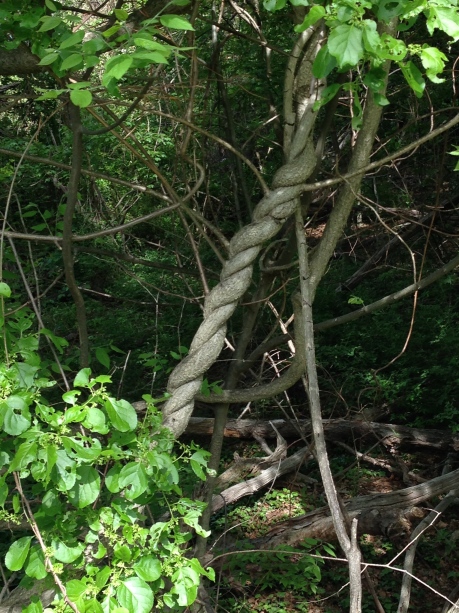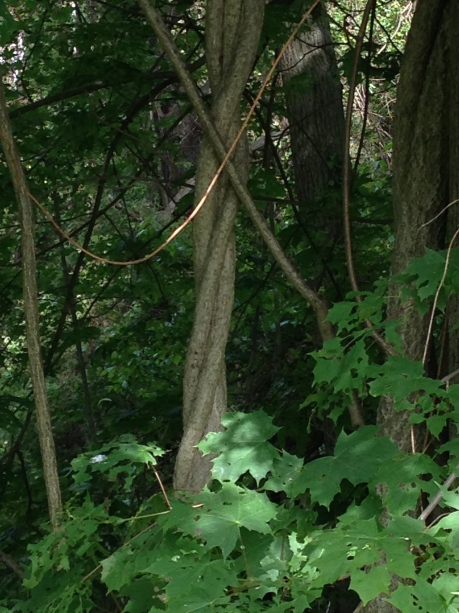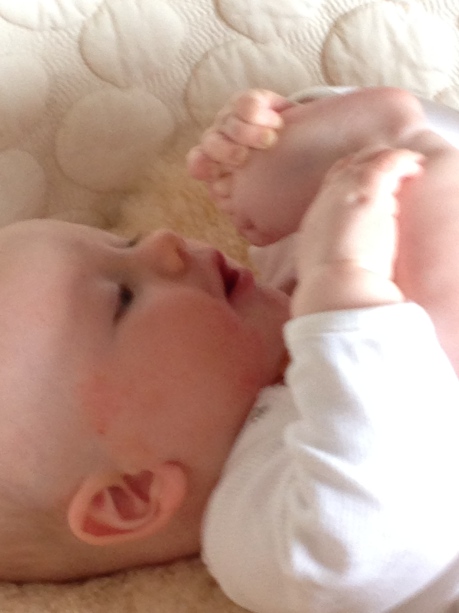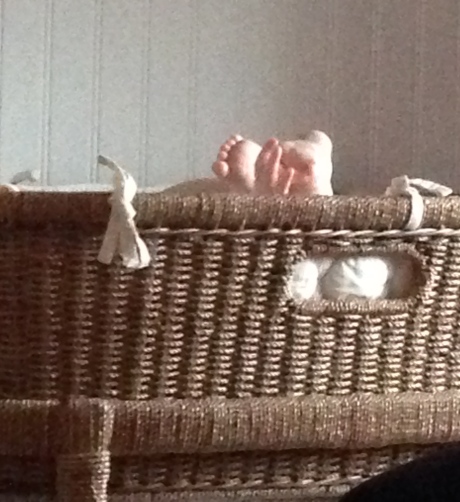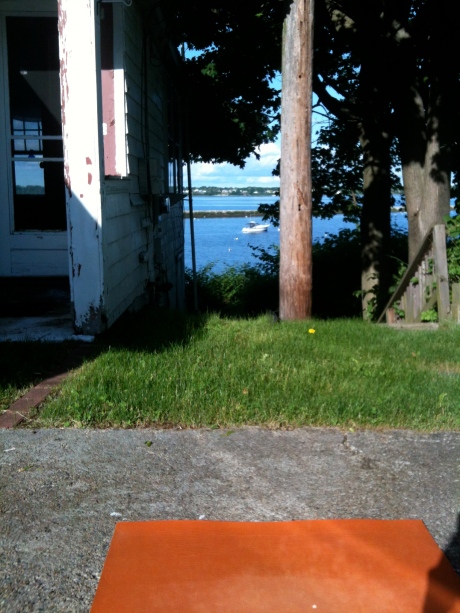A friend of mine has been writing a book on home practice and asked me about mine. I’ve been contemplating her questions over the last couple of months, and realizing just how integral home practice is to my every day. For most of my yoga life, I’ve lived away from my teachers. So I would travel to take classes or workshops, and then practice at home the rest of the time to deepen my understanding and integrate what I learned into my experience. Classes and workshops were where I got the raw material of the teachings. Home practice is where I made the yoga my own.
My first yoga teacher invited all his students to start a daily home practice. He would lead us in a beautiful class, then give us a sheet with stick figures in a sequenced flow and send us home with instructions to practice a bit every day. He assured us he would know if we did it or not. Hardly knowing what I was doing as a novice practitioner, I would light a candle, take a deep breath, and start- sometimes it was just a few minutes, sometimes it was a longer session. But the invitation to own my practice was there from the beginning.
Many years later, my practice shifted and I did almost all my practice at a studio. Showing up to class motivated me- the teachers, the energy of the room and group, the release to the sequence, all uplifted and elevated my practice. After cumulative injuries caused me to stop attending class, my home practice became reactivated. In the immediate aftermath of the injuries, I found a teacher who taught me healing actions and alignment to help me heal. At home, I could practice slowly, practice sequences that were healing for my particular situation, and practice deep listening and responding to my body’s needs for any given day. Since that time, almost 16 years ago, my practice has been primarily home-based.
For years, even after my body recovered and could hold the muscle memory of clear alignment and actions, the ritual of coming to my mat at home and responding to my body’s daily shifting needs, desires, and temperament was so compelling that I would look forward to it and cherish the time. I love a good class, but there’s something that feels very rich and holy about listening to the inner teacher.
Until two years ago, my normal asana practice would last anywhere from 50 minutes to 2.5 hours, 4-6 times a week. Meditation and mantric practices were an average of an hour and a half each day split into two sessions. I felt supported, steadied, and stabilized by these disciplines. It took some finagaling to figure out how to put it all in the day, but it was do-able. And then I got pregnant. And it all changed!
 When I got pregnant, we were so thrilled- it was a dream come true! I had visions of continuing my practices throughout the pregnancy, being one of those gorgeous women who are in full wheel pose in their ninth month, meditating good vibes into my growing baby’s sweet energy field, continuing my food sadhanas of healthy veggies to nourish every burgeoning cell. But the reality was- I was so sick and so tired. Meditation made the nausea so extreme. My mantra seemed to call up the bile, like the flute calls the snake up from the basket. My belly felt so pulled and tight and my energy so sapped, that all I felt like doing was supported forward folds and restoratives. A beautiful meal of fresh veggies from the farm share would come up again right after eating. So what was yoga practice with that scenario?
When I got pregnant, we were so thrilled- it was a dream come true! I had visions of continuing my practices throughout the pregnancy, being one of those gorgeous women who are in full wheel pose in their ninth month, meditating good vibes into my growing baby’s sweet energy field, continuing my food sadhanas of healthy veggies to nourish every burgeoning cell. But the reality was- I was so sick and so tired. Meditation made the nausea so extreme. My mantra seemed to call up the bile, like the flute calls the snake up from the basket. My belly felt so pulled and tight and my energy so sapped, that all I felt like doing was supported forward folds and restoratives. A beautiful meal of fresh veggies from the farm share would come up again right after eating. So what was yoga practice with that scenario?
Having cultivated a relationship with my practice over the years, one thing I’ve learned is that the best way of approaching practice is to not confuse reality with my ideas of how reality should show up. Practice instead is releasing expectations and meeting what is happening as it’s arising, and responding appropriately, with compassion. Which meant that expectations weren’t going to run the show.
One of the best teachings I received was the 10-minute rule, which basically says, if you don’t feel like practicing, just commit to being on your mat for 10 minutes. And it can be all savasana, or resting pose, if you want. Just stay on the mat for 10 minutes. Usually what happens is that you do a little movement, and then it births a different movement, and then a further exploration, and then you’re off and running. So that’s what I did.
Practice during pregnancy was a powerful reminder for me to listen to my inner experience of my edge and sense how it shifts from day to day. Yoga is about cultivating this intimate relationship with the Shakti. That’s what I love so much about home practice. There’s an opportunity to really meet one’s experience, unmasked, unveiled, courageously and curiously. It’s thrilling.
I learned about new levels of gentleness- toward myself and in my poses and my approach. I learned about my capacity to give myself permission to be easy with myself and honor my limits. I learned a great deal about the healing potency of restorative yoga and natural breathing. And then baby came. And practice shifted again.
Parenting is often exhausting. And for me, yoga and meditation practice are the things that have always filled up my gas-tank, so to speak. If we’re giving our all, it’s important to have sadhanas that replenish the energy stores. Yes, my son’s smiles fill me and give me energy, but ultimately I don’t want to depend on him to fill me up. That’s my job, not his responsibility. I want to be full for him. Yoga practice does that. How to find the time and space to do that was now a mystery that I was passionate to solve.
After some time, practice actually felt regular. I would meditate when he would nap or nurse. I’d wake early and meditate in bed while he slept beside me. I’d do asana during his morning or afternoon play time, with my mat next to his playmat and toys, him crawling or rolling over to me when it interested him. Or sometimes, I’d practice in the evening when he went to bed. Asana practice was centered on knitting together the different parts of my body that had spread apart during the pregnancy. I had a whole new understanding of what centering and finding my core was. Being on my mat at home, listening to my body’s new capacities was fascinating.
Other weeks or days, it felt impossible to figure out how to practice. When naps would be 15 minutes long, or he wouldn’t go down to sleep, Or he didn’t want to play by himself and just wanted to be held. Or in the evenings, all I wanted do was collapse on the couch. Or I had some time, but I needed to make food, wash diapers, shower, shop, clean or just go outside for fresh air. We all have legitimate and real reasons why we can’t get to our practice any given day. So home practice in those moments is about responding to what’s in front of us, with an open heart and a willingness to flow with what’s needed. And practicing self-compassion. And practicing faith -that the next day was a new opportunity to find the time for our breath and for listening within..
Practice these days is sometimes 15 minutes. An hour practice at one stretch without interruption is a luxury. But it happens. And it is so delicious. Like nectar. And I have the supreme delight in listening to what my body wants and needs and desires, and responding. Appropriately, optimally.
 I’ve learned how to warm up my body without a lot of time to do it. I’ve learned to find the two or three poses that will open me up rather than the sequence of 5-10 in case I don’t have time. Sometimes the session is broken up between requests to read a story or to give a hug, to incorporating him into the flow or to stop to nurse for a while before I start up again. I find myself regularly nursing in agnistambasana or in gomukhasana, changing legs after so many minutes.
I’ve learned how to warm up my body without a lot of time to do it. I’ve learned to find the two or three poses that will open me up rather than the sequence of 5-10 in case I don’t have time. Sometimes the session is broken up between requests to read a story or to give a hug, to incorporating him into the flow or to stop to nurse for a while before I start up again. I find myself regularly nursing in agnistambasana or in gomukhasana, changing legs after so many minutes.
I’ve learned how to savor sensations that I so easily took for granted before. Instead of a steady half hour of meditation, sometimes meditation is 10-minute sessions here and there. But I do it. Because if I don’t, I feel run ragged. When I miss practice, even the clips of time I catch here and there, I start to feel isolated, soul-tired. When I replenish with practice, life just feel more easeful, more supported. When Liam smiles at me, I feel the stream of Shakti that I’ve been steeping in, rise up to meet him through my eyes. I feel less like I’m doing the work of mothering, and more like I’m flowing in the oceanic Shakti, and that’s the source of my capacity to mother.
Whether we have the time in our schedule to fit in juicy amounts of practice, or like me in this powerful time in my life, it’s hard to find the “spare” moments, the thing is, no one is going to make the time for us. We have to do it. We can go to class and get support, nourishment, training, comraderie. And on the rest of the days, we have ourselves. And we’re worth listening to. Take what you learn from class, and workshop it in your body. Discover the pacing and the breath speed that wants to happen. Take time between poses, in the poses to feel, to notice, to inquire, to observe, to delight. Yoga is about your relationship to yourself and to your Self. This is the relationship that has been with you from your first breath, and will be there until your last. Meet yourself on the mat, on the cushion. The gifts of doing so are nectarean. They are gifts to yourself, but will also benefit everyone around you as well. Because as you steep in the Love, it pours forth from you. And there’s no richer gift to those you love.


